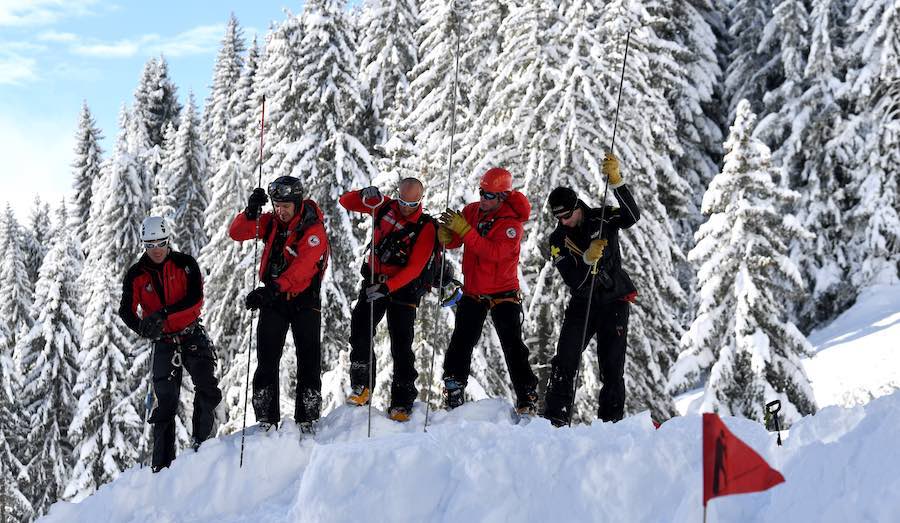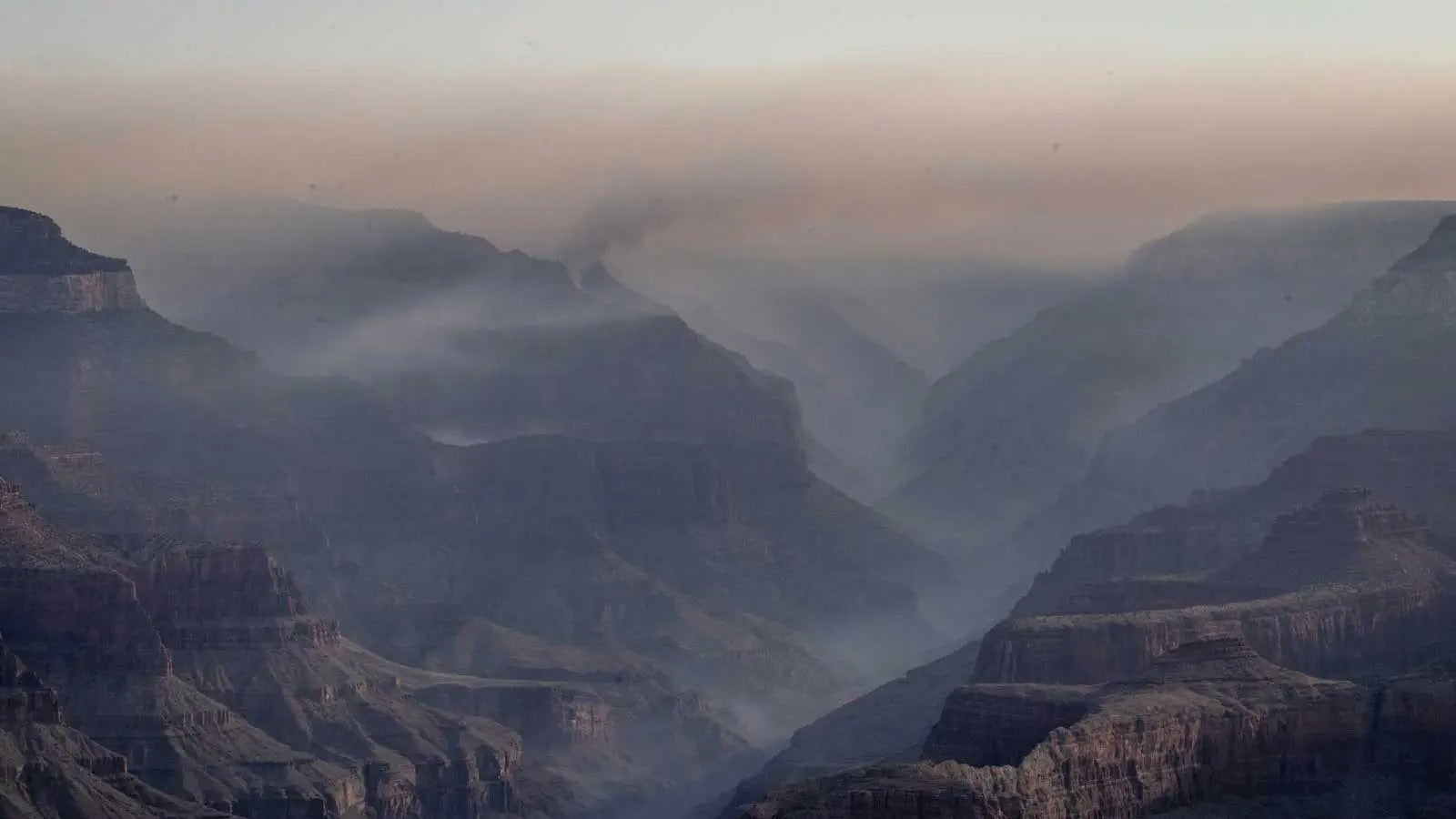Above: Firemen take part in a mock rescue operation during an avalanche exercise on December 19, 2017 in Les Gets, France. (Jean-Pierre Clatot/AFP via Getty Images)
In Part I of this post, we looked at U.S. statistics on where and when avalanches are most likely to occur. Here, we look at how avalanche forecasts are issued and how you can use these forecasts, together with some knowledge and some equipment, to help keep yourself safe in the high country. Even if you’ve never ventured into the snow, this post will give you a sense of the threats an avalanche can pose and the actions that can make a huge difference, whether you’re on your first or your hundredth trip into the backcountry.
Avalanche forecasts
By far the most important step you can take when heading out in the backcountry is to not go alone. When with a group, do not all ski into an avalanche-prone area at once. Once you have crossed an area, stay out of valleys where the threat for snow to run is great. Before you even head out, however, it is imperative to get an idea of how dangerous it might be on that day up on the slopes by accessing an avalanche forecast.
Avalanche forecasts provide an assessment of the avalanche danger and associated snowpack conditions. All of this information can be accessed online through avalanche.org, which connects the public to formal avalanche information and education in the United States. Avalanche.org is a partnership between the American Avalanche Association (A3) and the U.S. Forest Service National Avalanche Center (NAC).
The Forest Service operates a network of 14 backcountry avalanche centers. Each one provides a tremendous amount of detailed, valuable information on avalanche threats. They are summarized in standard messages that address a particular “avalanche problem” in terms of factors including type, location, likelihood, and size. The combination of these factors describes that particular avalanche hazard, as shown below.
The problem – One of nine potential avalanche characters or types
Location – Where the avalanche is most likely to exist in the terrain, shown with an Aspect/Elevation diagram
Likelihood – The chance of triggering an avalanche
Size – The destructive potential of the expected avalanche
The nine different types of avalanches covered in the “avalanche problem” entry include loose dry, storm slab, wind slab, persistent slab, deep persistent slab, loose wet slab, wet slab, cornice falls and glides. An example of the type of information available online for a storm slab is shown below.
Storm slab: A release of a soft cohesive layer (a slab) of new snow that breaks within the new layer or on the old snow surface. Storm-slab problems typically last between a few hours and few days. You can reduce your risk from storm slabs by waiting a day or two after a storm before venturing into steep terrain. Storm slabs are most dangerous on slopes with terrain traps, such as timber, gullies, over cliffs, or terrain features that make it difficult for a rider to escape off the side.
The forecast is only a starting point. You control your own risk by choosing when, where and how you travel. Fortunately, you can prepare for your backcountry outing very easily; these days it is just a click or touch away on your phone or PC. The avalanche centers provide constant updates to avalanche threats and conditions as well as the weather forecast.
Avalanche education and safety
Knowing the dangers of an avalanche reminds one how important education and safety are. If you end up caught in an avalanche, complete burial (snow above your head) is the worst-case scenario. In a 40-year Colorado study from the late 20th century, about 87 percent of all those rescued from complete burial in 15 minutes survived, but the odds dropped to 50 percent after 30 minutes and to less than 20 percent after two hours.
Getting an expert forecast of conditions is one important step to preparation before you head out. You also need to be fully prepared in three other basic areas: gear, training, and what avalanche forecasters refer to as “getting the picture”.
Gear: As noted above, if you are buried in an avalanche, you have precious little time to be rescued. In many cases, the tons of snow that come tumbling down the mountainside can cause very serious injury and death from trauma alone. Even without the trauma, you become encased in a dense snowpack that you cannot even move in, and often cannot even breathe in. Along with the cement-like grip that surrounds the victim, if you are completely buried, you can end up suffering another macabre twist over time. As the person’s breath melts the snow around their face, it gradually refreezes to form an ice mask that eventually shuts off the flow of oxygen. On top of this, rescuers may not be able to see where you are buried. That is why it is important to carry four or five items that will help increase your odds of survival. They include:
-A transceiver or emergency beacon. When worn by several skiers in your group, these allow the person buried in the avalanche to be located by those who are nearby.
-A shovel that allows one to quickly remove the dense, heavy, hard-packed snow from around the victim.
-An avalanche probe, which is a long extendable pole that, when used in conjunction with a transceiver, allows the rescuer to determine the exact location and the burial depth of the victim.
-An inflatable backpack airbag. This works not through enhanced buoyancy but instead through the principle of inverse segregation: bigger objects are more likely to stay higher in the mix. A deployed airbag simply makes you bigger, which helps keep you on the surface.
-The most important part about your gear is that it is imperative that you train often to know exactly what to do when an accident occurs. All too often, those who have the equipment are caught off guard when not exactly sure how to use a transceiver in the middle of an emergency. Remember, you only have a few minutes to get the person dug out of the snowy tomb.
Other training: Online classes conducted from many U.S. locations provide extensive training on how to access information about avalanche danger, learn the properties of the snowpack, how to read the terrain, how to access forecasts, and essentially how to take the guesswork out of assessing avalanche threat. Getting the training is more than taking a class: you also need to get out and practice, so that if and when something happens you are ready to react.
Get the picture: Know your environment. What type of slope are you on? Does it narrow into a canyon? What is the slope angle? Orientation is also important. As winter winds blow over a mountain pass, they often carry snow from the windward side and dump it on the leeward side. Such wind-loading is called cross-loading when the slope runs perpendicular to the prevailing wind direction.
If you know and are aware of the consequences of your observations, you will be that much better prepared. There’s nothing like getting out and enjoying the beauty of the winter season, and for many, the exhilaration that comes from a day in the backcountry can’t be beat. It’s critical, however, to be prepared when enjoying wintertime backcountry recreation. In fact, it could save your life.



